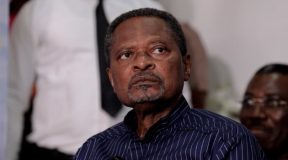Nigeria’s request to expand its continental shelf by 16,300 square kilometers—five times the area of Lagos State—has been approved by the UN.
On Tuesday, President Bola Tinubu received the report on Nigeria’s Extended Continental Shelf Project from the High Powered Presidential Committee (HPPC), which was a major accomplishment for the country’s maritime borders and economic potential.
Thanks to the UN’s acceptance, Nigeria now has sovereignty over this additional maritime region, extending its authority beyond the current 200 nautical miles, as per the 1982 United Nations Convention on the Law of the Sea (UNCLOS).
After years of devoted scientific and political labour, the project—which was started in 2009—reached this significant milestone.
The UN’s decision was the result of rigorous investigation and negotiations, which were presented to the President by Surveyor Aliyu Omar, Secretary of the HPPC, and marine scientist Professor Larry Awosika. Nigeria is now able to extend its continental shelf beyond 200 nautical miles according to the United Nations Commission on the Limits of the Continental Shelf (CLCS)’s approval. Surveyor Omar said, “The newly approved area is approximately 16,300 square kilometres.”
He underlined how crucial this achievement is strategically for Nigeria, a country with enormous economic potential thanks to its abundance of sedentary species, solid minerals, gas, and hydrocarbons.
After the acceptance, Omar listed Nigeria’s two options: either complete the registration with the UN Secretary-General, which would take around a year, or obtain more information for a second proposal, which might take up to four years.
“The first alternative, which indicates that we are happy with what we received, is to take the gained territory, complete the registration with the UN Secretary-General, and close everything. That will require a minimum of a year.
The second choice is to work with the information we currently have, gather further information, produce a support report, and submit an updated application as suggested by CLCS for additional review. It will require an additional four years.
“Nigeria will stick with the options that have been approved in either case.” Put more simply, Nigeria has a year to complete the existing permission with the UN and secure the newly obtained territory, or it can spend an additional four years gathering information to support a second request that would further extend the shelf life.
Nigeria will keep the recently permitted region, regardless of the course that is decided upon. Professor Awosika emphasised the careful scientific study that served as the foundation for Nigeria’s accepted application. “Deep studies in geography, geology, and geophysics over several years, along with calculated diplomatic moves, led to the approval,” he stated. He also mentioned how crucial it is to keep the sensitive information collected during the surveys private in order to safeguard Nigeria’s economic interests.
President Tinubu conveyed his appreciation to the group for their diligent efforts and commitment
. “This is a noteworthy accomplishment for Nigeria.” “We have expanded strategically and peacefully, as evidenced by the additional territory we have gained without conflict,” the President said. He also cited talks he had with foreign leaders, such as President Lula of Brazil, and former President Muhammadu Buhari, highlighting the significance of cooperation across maritime and economic borders.
The group received praise from the president for their knowledge and dedication to furthering Nigeria’s goals. “I congratulate the team, and we should use this success to further investigate prospects in marine life, hydrography, and geography. Your efforts are appreciated by Nigeria,” he said. The meeting was attended by the Minister of Marine and Blue Economy, Adegboyega Oyetola, Chief of Staff to the President, Honourable Femi Gbajabiamila, and Ambassador Hassan Tukur, Chairman of the HPPC.

